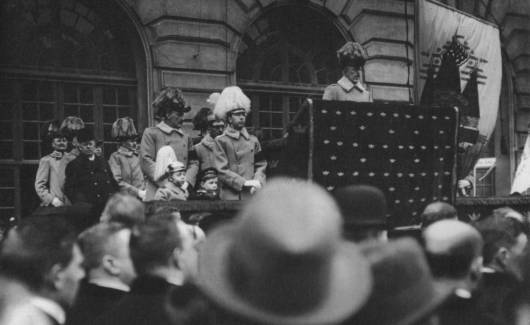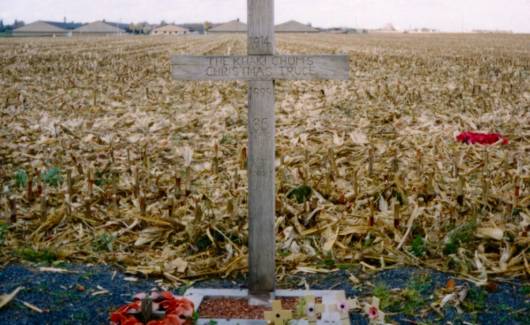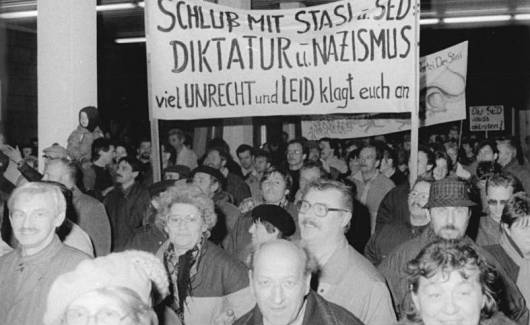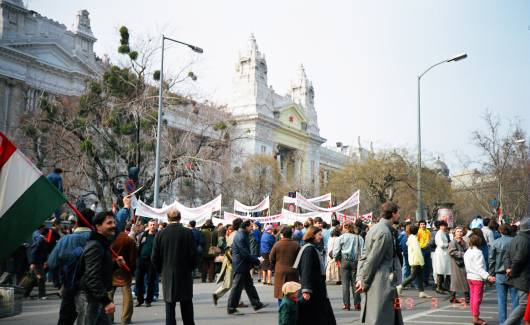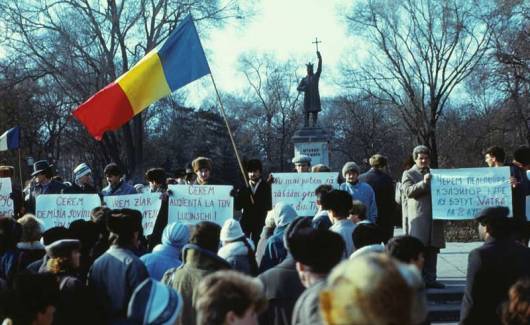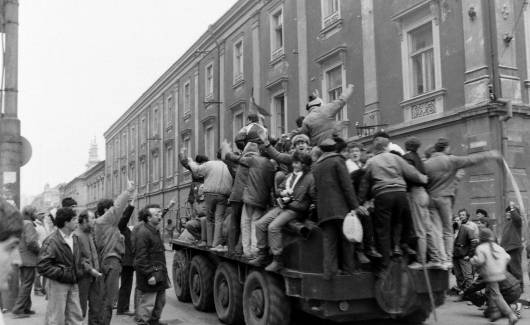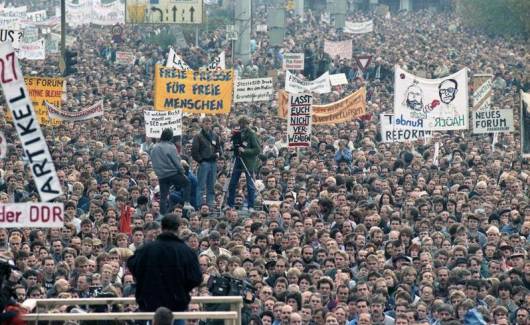ABSTRACT
The Stadtfriedhof Tübingen has three burial sites connected to wars. The Kriegerdenkmal 1870/71 and the Kriegerfriedhof 1914/18 contain and commemorate soldiers who died in Tübingen hospitals during the Franco-Prussian War and the First World War. The Gräberfeld X is a burial and memorial site for the mortal remains of victims of Nazi rule whose bodies were used in the university’s anatomical institute. Analyzing and interpreting these three local war memorial grave sites and putting them into the larger national context of remembrance shows how the German memory culture of wars has changed over time from warriors to victims.
Introduction
The town of Tübingen, Baden-Württemberg, in southwestern Germany has one of the country’s oldest universities, the Eberhard Karls Universität, founded in 1477. A great number of its professors have been interred in the Stadtfriedhof, the city’s central cemetery, dating to the first half of the 19th century and located near many of university’s academic and medical buildings. Moreover, this graveyard is particularly known for the burial sites of famous Tübingers such as the German Romantic authors Ludwig Uhland and Friedrich Hölderlin, as well as Kurt-Georg Kiesinger, third chancellor of the Federal Republic of Germany. However, there are also burial plots that commemorate the casualties of three wars that have shaped German history in the past 140 years. While the Kriegerdenkmal 1870/71 and the Kriegerfriedhof 1914/18 commemorate and hold the remains of soldiers who died in Tübingen hospitals during the Franco-Prussian War and the First World War, respectively, the Gräberfeld X is a burial and memorial site for the mortal remains of victims of Nazi rule whose bodies were used in the anatomical institute of the university’s medical faculty. What can these commemorative graves, whose only commonalities, it seems are their close vicinity in the same cemetery and the wreaths dedicated to the victims of war laid down each November on Volkstrauertrag (German Memorial Day), tell us about the memory of the aforementioned armed conflicts in Germany history? By analyzing and interpreting these three local war memorial grave sites and their architecture and putting them into the larger national context of remembrance, this article aims to show how the memory culture of Germany’s last three European and interconnected wars and the focus of commemoration has changed over time, from warriors to victims, and what this can tell us about the meaning attached to these conflicts.
Kriegerdenkmal 1870/71
The defeat of France by a Prussian-led coalition of German principalities in the War of 1870 resulted in the creation of the Reich, or German Empire, in 1871 – the first unified German nation. While its emperor was the Prussian king, the Reich itself was a federation made up of the various German principalities, among them the Kingdom of Württemberg. The latter’s university town of Tübingen on the Neckar had, during the war, housed wounded German soldiers from various contingents in its hospitals. A number of these soldiers died, and thereby constituted a problem: How to commemorate them (Hoffmann-Curtius 1986, 45)?
The Napoleonic Wars sixty years earlier had seen a change in how the war dead were remembered. After earlier armed conflicts, it had been princes or generals who received post-war monuments and equestrian statues to celebrate their leadership and battlefield heroism. With the mass armies and accompanying mass casualties of the armed conflicts in the early industrial age, the common soldier began to be the focus of remembering a war, especially the dead who had sacrificed their lives on the altar of the evolving notion of a “nation.” This particularly found expression in architecture: the names of fallen soldiers of a community were engraved in public plaques, often on church walls. By doing this, a community commemorated the loss of its sons and thereby showed its gratitude for their sacrifice for posterity (Rieth 1967, 11–12; Vogt 1993, 16ff.).
On the other side of the Atlantic, it was the American Civil War of 1861 to 1865 with its approximately 620,000 casualties that spawned an outpouring of monuments to the memory of its casualties. Often in the form of a statue of a common soldier, these memorials, erected on battlefields and town commons, commemorated the heroism of the rank and file and the part that they had played, at least in the eyes of Northerners, in saving the Union, or nation, as well as remembering the ultimate sacrifice of the fallen. Therefore, battlefield heroism and death, as well as the concept of the nation, were entwined in the North’s memorial culture after the war. National cemeteries were built on important battlefields to inter and commemorate those who fell far from their homes. (Piehler 2010, 224–227).
The situation in Tübingen after 1871 was both different and similar to that in America. The war between the Union and the Confederacy was a civil war, while the Franco-Prussian War was not. 1 Both wars, however, were nation-building conflicts: the outcome of the American Civil War was that the United States would, after the defeat of the slave-holding South, be based on the North’s principles of industrialized free labor, while the War of 1870 resulted in the unification of Germany under Prussian domination. Although the German princes had fought alongside each other against France, the Reich’s political map was still characterized by the regional nature of various principalities, from duchies to kingdoms, and an accompanying sense of Heimat that was very much rooted in local identities. The victory over France rekindled nationalist sentiments that had been smoldering since the wars of liberation against Napoleon and during the absolutist restoration period that had followed, ultimately leading to the proclamation of the Prussian king as German emperor in the mirror hall of Versailles in January 1871.
Tübingen’s role as a university town with continuously expanding medical faculties and its spatial proximity not far from the battlefields of France had made it a Lazarettstadt, a military hospital city that received wounded soldiers from different principalities’ military contingents. Fourteen of them died and were to be laid to rest in situ. This posed an issue: How, in what form, were these soldiers to be remembered? Shortly after the end of the war, in 1871, this question was addressed. It was decided to commemorate the dead with a monument in the cemetery where they were interred – the Stadtfriedhof. A debate ensued about the architectural form of the monument, and from among a number of designs one was finally chosen (Hoffmann- Curtius 1986, 47f.).
The result was a stone obelisk, adorned with old swords and helmets, laurel wreaths, and an Eiserners Kreuz (Iron Cross), with the names, ranks, and regiments of the deceased soldiers engraved on the sides, and the words
VIERZEHN /
DEUTSCHE KRIEGER /
IM KAMPFE /
FÜR /
DAS VATERLAND /
SCHWER VERWUNDET, /
BIS ZU IHREM TODE /
IN UNSERER STADT /
VERPFLEGT /
RUHEN HIER /
IN HEIMISCHER ERDE /
1870–72 /2
Unlike monuments erected for the commemoration of regiments that were tied to a specific city, such as that of the Naussauisches Infanterie-Regiment Nr. 87 garrisoned in Mainz until 1918, and thereby deeply rooted within a certain locale, the Kriegerdenkmal on the Stadtfriedhof Tübingen3 addressed the memory of soldiers who did not hail from the town were they are buried. This was because of the nature of the Franco-Prussian War and the set-up of the German armies, together with Tübingen’s role as a Lazarettstadt.
From an architectural perspective, the newly-found nationalism of the Reich after the War of 1870 expressed itself in the Iron Cross on the Kriegerdenkmal obelisk. The Iron Cross was a military decoration for common soldiers to acknowledge their bravery that had been instituted by Prussian King Frederick William III in 1813 during the wars of liberation. 4 While the Christian cross would have been the usual and religious choice as the symbol of decorating graves, selecting the Iron Cross, a symbol of Prussia, points to the need to subsume the fallen from different German states under a sign that symbolized the new nationhood of the Reich. This also replaced traditional religious notions with the symbolism of a nation by overarching the heritage of single principalities and constituting a new and higher order (Vogt 1993, 35ff).
Moreover, as this was a monument to commemorate dead soldiers in a cemetery and not a leading general or prince in a more central locale such as a public square, and as these soldiers’ sacrifice in the fight for the newfound nation was a thing to be remembered, their names were engraved on the obelisk for posterity – for future generations to be reminded of what these soldiers and their deaths (or, to go by the inscription, being wounded first in the fight for the fatherland) had accomplished for the new nation symbolized by the Iron Cross. Still, their regional identity and heritage was deemed important, as was the mention of their regiments, which were closely tied to regional identity. But they rest “IN HEIMISCHER ERDE,” which again emphasizes the shared fatherland they had fought for, despite their regional backgrounds. They are buried at home away from home.
In addition to pointing out the regional and regimental affiliation of the dead soldiers, a distinction is made between their ranks. The name of a fallen lieutenant is not found on the obelisk, but received a separate grave slab. 5 The social gap between the officer class and the rank and file, was becoming increasingly permeable, especially for members of the upper middle-class after the Napoleonic Wars, 6 and therefore also the German social hierarchy of the time; here it finds an embodiment both architecturally and spatially.
Furthermore, the architectural design of the obelisk signifies the fashion of the time. Implementing swords reminiscent of old Greek edged weapons and a helmet from the same time are examples of the Neoclassicism that swept the western world at the time (Hoffmann-Curtius 1986, 48). The previous century had seen a renewed interest in antiquity, its architecture and literature (Watson 2010). By using Ancient Greek armaments, reference was made to heroic legends, such as the Iliad, thereby also denoting the dead soldiers buried and commemorated in Tübingen as heroes of the successful recent war for unification.
Looking at monuments for the participants of the Franco-Prussian War in other regions of Germany, we detect similarities to the Kriegerdenkmal. 7 In the square in front of the train station of Bad Dürkheim, a wine-growing town in Rhineland-Palatinate, then part of the Bavarian Rheinprovinz, a large ashlar of sandstone erected in 1911 commemorates the town’s participants in the War of 1870. Their names are arranged in order of importance (alongside soldiers who served in Bavarian regiments are some civilians, including women, who contributed to the war effort) and therefore according to social status. All around the ashlar are Ancient Greek helmets and laurels. In contrast to the Kriegerdenkmal on the Stadtfriedhof, the statue of a lion holding a shield adorns the Bad Dürkheim monument. The use of allegorical representations of animals on war memorials was common at the time (Rieht 1967, 12); most likely, the lion stands for the coat of arms of Bavaria, while the shield might represent the proximity of the Palatinate, or Rheinprovinz, to France and Bavarian troops acting as defenders in the first days of the war. Another War of 1870 memorial is in the neighboring village to the south, Wachenheim, this one adorned by an eagle. What the Bad Dürkheim memorial lacks, though, is the Iron Cross. This is perhaps due to Bavaria’s reluctance to join the new Reich and the strong feeling of Bavarian patriotism, creating an aversion to the centralized power of Prussia throughout the Kaiserreich. Of course, it should not be forgotten that these two monuments commemorate local participants of the war against France, while the Kriegerdenkmal remembers non-Tübingeners, which might attest to the lack of national symbolism.
Kriegerfriedhof 1914/18
The War of 1870 and the French cry for revenge after a humiliating defeat and a loss of territory (Elsace-Lorraine) were among the factors, such as Germany’s military stockpiling and saber-rattling, that contributed to the outbreak of another war between Germany and France, a conflict that started locally, with a mortal injury to the Austrian archduke in Sarajevo, and became global with the involvement of European imperialist powers’ colonies and the 1917 entry of the United States. The Great War saw the clash of mass armies in industrialized modern warfare and unprecedented numbers of casualties, about two million military in Germany alone. Tübingen, which had become a garrison town in the late 19th century, extending its medical faculties, and Germany on the whole, had to deal with the vast number of war dead and the political and ideological aftermath of the Kaiserreich’s defeat and the effects of the Treaty of Versailles. In this context, the Kriegerfriedhof 1914/18 on the Stadtfriedhof Tübingen can be seen as a culmination point of issues concerning local and national war remembrance.
The debates on a monument for Tübingen’s veterans of the Franco-Prussian War, and thus on commemorating an earlier conflict, heated up once again in the early 1910s, but were overtaken by the events of the time (Hornbogen 1995, 155). With the influx of wounded to Tübingen’s medical facilities, the Württembergian city once again faced the task of both interring and remembering the war’s dead, but now on a scale that by far superseded the War of 1870. In addition to the great number of casualties, the end of the war, Germany’s capitulation, and the Treaty of Versailles played important roles in giving significance to the war and its dead.
In 1921, the Kriegerfriedhof 1914/18 was inaugurated. Its name shares the “Krieger” of Kriegerdenkmal. Choosing to use not Soldat (soldier) but Krieger (warrior) is already an interpretation. Krieger conjures up images of Germanic or medieval warriors, both legendary and real, already familiar to German schoolchildren at the time, with an added connection to heroes like Siegfried from the Nibelungen epic or medieval Helden such as Kaiser Barbarossa or Emperor Frederick I. 8 These figures were appropriated to create an overarching national German history and identity, as well as role-models in the highly militarized culture of the Kaiserreich, with its emphasis on soldiering, loyalty, obedience, and sacrifice. This is emphasized by the inscription on the large central stone wall of the Kriegerfriedhof, DEN HELDEN DES WELTKRIEGS – “to the heroes of the world war.”
And just as Siegfried was murdered from behind by the unfaithful Hagen von Tronje in the medieval epic, the Dolchstoßlegende emerged after World War I. Because the Reich had not been, for the most part, a battlefield9; because the real brunt of a war economy with food shortages only had real effects on the civilian population in 1917–18; because German troops were successful on the eastern front, forcing Russia to sign a separate peace contract; because the reversals of the German spring offensives of 1918 and the subsequent retreat to defensive lines nearer to Germany itself were played down by the Oberste Heeresleitung’s propaganda; because the armistice, planned by the military but signed by the new democratic government of November 1918, seemed to many Germans sudden and unexpected; and because the revolution of 1918 to 1919 was, in part, accompanied by Bolshevik-inspired Arbeiter – und Soldatenräte, the myth that the German armies, allegedly unbesiegt im Felde (undefeated on the field of battle), had been stabbed in the back by the revolutionaries and the new Social Democrat government took hold in Germany, especially in conservative and right-wing circles. The Treaty of Versailles with its implications of territorial losses on the outskirts of the Reich and of its overseas colonies, the scaling down of the German armed forces, and especially the article that stipulated that Germany alone was responsible for the outbreak of the Great War added insult to injury; it was, in German eyes from the extreme left to the extreme right, a Schandvertrag, a shameful treaty that insulted Germany’s honor (Krumeich 2001, 585ff).
Therefore, Germany had to grapple with a number of questions. Why was the war that seemed heading toward a victory suddenly lost? Who was responsible? And what did almost two million German soldiers die for? Some of these issues were addressed in architecture, most prominently war memorials, of which the Kriegerfriedhof in the Stadtfriedhof Tübingen is one example.
The warrior cemetery was inaugurated on October 30, 1921 in the presence of participants of a number of groups that shaped the commemoration of the Great War during the Weimar Republic, most prominently the Kriegervereine. These veterans' organizations had emerged after the War of 1870; its members wanted their contemporaries and future generations to appreciate what soldiers had accomplished during the war. They did this by funding and erecting monuments, through reunions that took place in the public, and lobbying through the media. At the inauguration of the Kriegerfriedhof, the Kriegervereine were present, along with other military veteran organizations and student fraternities, standing at attention, holding flags, singing martial tunes, commemorating dead comrades, and giving speeches. In one speech, a motif that runs through the remembrance of the First World War’s casualties in Weimar Germany is that their sacrifice for the fatherland should not have been in vain (Hornborgen 1995, 157). The underlying sentiment was to take revenge for the lost war, and especially the Treaty of Versailles.
Architecturally, the most important motif was the Feldgrauer. Just before the Great War, the contingents of the different principalities that made up the imperial German army had adopted a field-gray uniform, a drab color that was suited to the trench warfare of the First World War. In 1916, the German imperial army introduced the Stahlhelm, the steel helmet with its distinctive design reminiscent of certain Germanic medieval helmets. The Feldgrauer figure that was representative of all German soldiers (Jeismann and Westheider 1988, 9) therefore derived his name from this uniform, with the addition of the iconographic silhouette of the steel helmet.
In the Kriegerfriedhof, a Feldgrauer’s head is engraved on a centrally placed stone memorial reminiscent of an ancient tomb. His face stares determined into a distant future. This is a metaphor expressing that Germany had not really been defeated – or that it was, at least, going to set things straight, to revise the Treaty of Versailles, in a future conflict (Hoffmann-Curtius 1986, 58). Similarities can be found in other World War I memorials all over the Germany. In Düsseldorf, the Ehrenmal für das Niederrheinische Füsilier-Regiment Nr. 39 memorial shows columns of armed Feldgraue marching straight from the tomb into a new battle, while in Worms four Feldgraue representing the Infanterie Regiment Prinz Carl (4. Großherzoglich Hessisches) Nr. 118 stand at attention. In the Palatinate town of Herxheim am Berg, three stone field-gray-clad soldiers march forward, their rifles at the shoulder. In the oldest church of Lindau on Lake Constance, the Peterskirche, a marble Feldgrauer lies on his deathbed – still fully clothed with helmet, overcoat, boots, belt, clutching a rifle in his hand, ready to spring up and do his duty again at a moment’s notice.10 The war memorial of Hardenburg, a district of Bad Dürkheim, depicts a Feldgrauer on the ground, at first glance looking beat, holding a broken short sword in his hand – but he is not yet completely defeated, as he is still propped up on his arm. The small Palatinate village of Forst’s World War I memorial, though, is not as aggressive or revisionist. Here, Feldgraue without helmets rise from their deathbed and pray to Jesus Christ. Similarly, religious undertones can be found in the First World War memorial in the Swabian town of Burladingen, where an angel takes a Feldgrauer in its arms. 11
But as in the example of the Stadtfriedhof’s Kriegerdenkmal 1870/71 and its contemporary memorials in other German towns, the Kriegerfriedhof lacks the rootedness in the city where it is situated. Its connection, however, is to an important part of Tübingen – its medical facilities. As during the War of 1870, soldiers from all over Germany were treated here, and, in some cases, died here. Their sheer numbers also necessitated that the Kriegerfriedhof be much larger than the Kriegerdenkmal. While the latter is located in a small area with only an obelisk, some steps leading to it, and a low wall all around, the Kriegerfriedhof is an actual cemetery. About 261 soldiers – among them some allied soldiers – are interred in the warrior cemetery (Hornbogen 1995, 156). Instead of putting all their names on a single architectural structure, as with the Kriegerdenkmal obelisk, each soldier got his own marker. The rank and file received small marble stones with their name and their year of death. These markers are arranged in subsequent lines according to the years 1914 to 1919. The large number of markers and their arrangement are representative of the mass casualties of World War I, and evocative of the lines of soldiers going over the top that were mowed down by one of the latest instruments of modern warfare, the machine gun.
As with the Kriegerdenkmal, the rank and file in the Kriegerfriedhof are separated from officers and non-commissioned officers. The latter received actual crosses bearing their names, ranks, units, and complete date of death, while the common soldiers’ markers only bore their names. Additionally, there is a path between the long rows of small stone markers and the smaller number of crosses, which are nonetheless equally arranged by years and in rows. The spatial separation of the graves symbolizes the separation of the (non-commissioned) officer and common soldier’s classes, a continuity from real life, where officers had more privileges even in death, as in the Kriegerdenkmal, thereby showing the class-based system of the Reich.
The cult of the Feldgrauer, together with its implications of martially repealing the Treaty of Versailles, continued into the Third Reich. After 1933, the university quickly expelled Jewish professors and ideologues like philosopher Theodor Haering (Hantke 1991, 179ff). After the re-introduction of general conscription in 1935, new military garrisons for the Wehrmacht were built, among them the Hindenburg Kaserne. Its entry was adorned with a statue of a Feldgrauer (Vogel 1991, 45). In addition, a monument celebrating composer Friedrich Silcher was erected in the Platanenallee on the Neckar. Below the statue of Silcher himself, it depicts, on the one hand, a pair of lovers, Silcher’s Volkslieder celebrating the Heimat. On the other hand, two Feldegraue are part of the monument. One of them is marching forward, while the other has been struck by a bullet and falls at the feet of his comrade. This is a reference to “Der gute Kamerad,” a sad poem by Tübingen Romantic author Friedrich Uhland about a soldier’s loss of a comrade in battle, written during the Napoleonic Wars. Twenty years later, Silcher composed a tune for this poem, and “Der gute Kamerade” became (and remains) a staple of German military songs, especially when commemorating dead soldiers during funeral ceremonies. Unveiled just before the invasion of Poland in the summer of 1939, the Silcher Denkmal with its Feldgrauer iconography not only pointed to the past and to the sacrifices of World War I, but also to the future, where more German soldiers were to lose their lives on the battlefield (Loistl 1991, 171ff). Unlike the Great War, however, the commemoration of World War II and Nazi rule dead would take a different turn in the post-war years.
Gräberfeld X
On May 8, 1945, Nazi Germany surrendered unconditionally to the Allies. Millions of people, soldiers and civilians alike, had died during the Second World War in Europe. In contrast to the end of World War I, though, Germany was completely occupied and a process of demilitarization, denazification, and democratization was set in motion by the (western) Allies to prevent Germany from ever starting a war again. In Nuremberg, high-ranking Nazi officials faced a war crimes trial for instigating the war and causing the deaths of innocent civilians. The liberation of concentration camps, which Allied soldiers often forced German civilians from nearby towns to visit, and the release of films documenting Nazi atrocities showed the world and the German public the results of Adolf Hitler’s reign. Several other war criminal trials were conducted over the next years. Many Germans, however, tried to forget the twelveyear Tausendjähriges Reich and began rebuilding what the war had destroyed in their respective occupation zones. Nonetheless, some did not want to forget.
An organization of those who were once politically persecuted, the Vereinigung der Verfolgten des Naziregimes (VVN), opened the discussion on the Gräberfeld X13in the Tübingen Stadtfriedhof in 1950. They demanded that victims of the Nazi state that had been interred in the Gräberfeld should be commemorated. During the late 1930s and the war years, the anatomical institute of the university’s medical faculty had received a large number of bodies for dissection; many of these people had been executed because they had opposed the Third Reich, or just because of their alleged racial inferiority. Among them were German passive resisters who had doubted the successful outcome of the war, as well as forced laborers from German-occupied countries who had been intimate with German women and thereby violated the 1935 Nürnberger Rassegesetze, all offenses punished by death under Nazi law. After their execution – whether official ones in prisons or unofficial ones in labor camps, all in Württemberg – their corpses were used for study purposes at the anatomical institute, and some specimens might have been been used as late as 1990 when the medical faculty had some questionable specimens removed from its collections and interred in the Gräberfeld X (Hayes 2013, 50–52; Schönhagen 1987, 7–10).
These were victims of Nazi rule with its racist and anti-opposition ideology. With Germany having been liberated from this rule and the war criminals being punished, those who were persecuted and had survived their ordeal wanted the memory of their dead fellows to be preserved, not least to keep future generations from letting something like the Third Reich happen again. The Tübingen city council decided to erect three stone crosses with the inscription “1939–1945,” an architectural form common for remembering the (military) dead of World War II and symbolizing Christ’s crucifixion and reconciliation. Through this general depiction, though, different types of casualties were subsumed into a larger community of the victims14 of World War II, regardless of whether they belonged to the armed forces of the aggressor nation (Germany), civilian victims of air raids, for example, or to ethnic or political groups persecuted by the Nazis (Hayes 2013, 40–42; Schönhagen 1987, 11). This is also shown through the ubiquity of these three crosses in war cemeteries all over Germany. They can be found, for example, in the World War II victims’ memorial in the Tübingen Bergfriedhof commemorating most of all those Tübingers who had died serving the German armed forces during the war (Hayes 2011, 133–144; Hayes 2013, 40–41).
In the early 1960s, new demands arose. Especially in light of the fact that the Gräberfeld X was run-down, unkempt, and overgrown, the city decided to clear it and, because of the continual demands from various groups, opted to add a plaque to specify more who was buried here. After heated debates, the following inscription was chosen:
HIER RUHEN MEHRERE /
HUNDERT MENSCHEN /
VERSCHIEDENER VÖLK /
ER DIE IN LAGERN UND /
ANSTALTEN UNSERES /
LANDES EINEN GEWALT /
SAMEN TOD FANDEN /
15
But despite being more specific than the three crosses with “1939–1945” on them, this wording is still very vague, and it does not really specify who exactly is buried in the Gräberfeld X, or why they were killed (Schönhagen 1987, 14–15). The difficulty of finding an appropriate way of honoring the victims of Nazi rule buried in the Gräberfeld X represents the difficulty West Germany had with its Nazi past during these years. While some wanted to forget or felt that it was enough to commemorate all victims the combined, regardless of why they were killed, others saw importance in adequately and frankly remembering different victim groups. In turn, this struggle of defining national remembrance shows on the local level of Tübingen, where groups with different opinions clashed. The 1962 plaque was a compromise between those who wanted to remember and those who felt at least some obligation to do so, but were not willing to be more specific and who, moreover, wanted to be rid of the past – a Schlussstrich. Getting more concrete would have meant dealing with what had actually happened in their immediate vicinity, that is, in the city of Tübingen, and the surrounding region of Württemberg. In turn, this would have shown that the crimes of the Nazi regime did not only happen in a distant occupied territory, but right at home as well (Hayes 2013, 42–43; Schönhagen 1987, 14). Thereby, the disconnectedness of Nazi crimes and the Heimat that pervaded the early post-war attitude of not having witnessed or even knowing the Third Reich’s crimes in the fatherland was perpetuated, something that, in hindsight, is hard to believe, as forced laborers, euthanasia clinics, and concentration camp death marches occurred right before the Germans’ eyes16; but in the postwar years, forgetting the past was the rule, with a few exceptions.
Therefore, it took another twenty years before the Gräberfeld X became a focus for the Tübingen public once again. As in the 1960s, the Gräberfeld had overgrown, and was in need of re-structuring. A published photograph of a bulldozer left by a gardener on top of some graves resulted in public outcry from many sides, as this was seen as dishonoring the victims of the Nazi regime. The Gräberfeld X was back in the spotlight. Shortly thereafter, bronze name plates were set next to a path that led to the three crosses and the 1962 stone plaque. On Volkstrauertrag 1985, the Tübingen Oberbürgermeister Carlo Schmid held a speech at the Gräberfeld X for the first time, connecting what happened on the Tübingers’ doorstep, and putting this in the larger context of the Nazi policy of extermination.17 He also announced that the city government of Tübingen would commission a study of the backgrounds of those interred there (Hayes 2013, 47–50). While the political group of the 1950s had known some of the people’s fates, it was historian Benigna Schönhagen’s 1987 study that tried to establish how many victims of Nazi rule were actually buried in the Gräberfeld X,18 as well as some of the individuals’ stories, thereby exposing the interconnectedness of Tübingen and the Third Reich – of local and national history.
This new type of remembrance can be seen in the larger context of remembering the casualties of World War II in Germany. It took almost forty years until special emphasis was added to the general remembrance of all victims, commemorating those who perished as a result of Nazi policies, until what is today called Vergangenheitsbewältigung became widespread (Hayes 2011, 132–133). Some have attributed this to the temporal distance from the war years and the aging or dying out of witnesses, victims, and perpetrators, and therefore also their disappearance from the public. While there had been war crimes trials up until the 1960s, such as the Auschwitz trials, the crimes of the Third Reich were mostly attributed to a small group of high profile perpetrators, leading Nazi figures like head of the SS Heinrich Himmler, or lower-ranking but influential people like Adolph Eichmann. It was only over time that both historians in academia and amateurs in local historical societies began unraveling the mechanics of the Nazi regime and the participation of many population groups, thereby providing a more nuanced picture of the Täter, or perpetrators, how much the “average” German knew or was him – or herself involved in, for example, profiting from Arisierung, or being involved in Nazi organizations such as the Hitlerjugend. Moreover, the student revolt of the 68er and their questioning of what the Vatergeneration had done in the war – if their fathers had “only” served the fatherland or had, in the course of the war, participated in crimes – added to a more critical perspective on a past that was not so distant, both in space and time. Concentration and labor camps had been spread all over Germany, forced laborers had worked for farmers and corporations, and the depiction of the Wehrmacht as a clean army removed from the Weltanschauungskrieg (as opposed to the ideological Waffen-SS) began to be overturned as well.19
As such, this critical reception and interpretation of the Nazi past also deviates from how earlier wars were remembered in Germany. While the War of 1870 was a victory and the First World War a conflict whose outcome was disputed, World War II had been a total defeat that was seldom glorified.20 This led to neither the creation of an idealized past where the military had helped build Germany, as with the Franco-Prussian War, nor to the sense of an important foundation for the strength of the country, as with World War I and the instrumentalization of its memory by the Nazis (leading to the next world war, and even more disastrous results). The Second World War and the Nazi years came to be seen, over time, as a dark chapter of German history that should not be repeated. Instead of glorifying the fallen heroes – soldiers – the critical reception of the past that continues in Germany to this day does places no emphasis on remembering the military casualties of World War II, but the victims of the Nazi regime, for which the German armed forces was an instrument of power. The heroization of a martial past instrumentalized for nationalism is less the focus than the remembrance of the victims of a criminal regime and a historical imperative never to repeat the Third Reich or to achieve political aims through war.
In the Gräberfeld X, this type of remembrance is visible in a variety of ways. For one, like the soldiers’ graves, the identified names of victims are represented in a number of bronze plaques set on both sides of a trail leading to the main architectural monuments to keep their memory alive. While the three stone crosses are still there, another plaque was installed, founded by the university and thereby acknowledging the part that the medical faculty played (Hayes 2013, 50–54). It finds more concrete words for the people buried in the Gräberfeld:
Verschleppt Geknechtet Geschunden /
Ofer der Willkür oder verblendeten Rechts /
fanden Menschen Ruhe erst hier /
Von ihrem Leib noch /
forderte Nutzen eine Wissenschaft /
die Rechte und Würde des Menschen nicht achtete /
Mahnung sei dieser Stein den Lebenden /
Die Eberhard-Karls-Universität Tübingen /
1990.21
Soon though after its inauguration in 1990, the plaque was violated by people who painted swastikas over it, and a new version was installed (Hayes 2013, 53). Before entering the Gräberfeld, which is surrounded by a hedge, just as the Kriegerfriedhof 1914/18 is, a signboard gives detailed information about the Gräberfeld and its history of commemoration – unlike the two soldiers’ cemeteries, which are devoid of any inscriptions indicating to their historical contexts.
While all three burial sites receive wreaths on Volkstrauertag and some graves at the World War I cemetery are adorned with flowers, there are often events in Gräberfeld X, especially on days like May 8, the day of the German capitulation in 1945, where anti-Nazi groups and historical societies meet, sometimes with family members of some of the deceased present. Some dedicated individuals try to keep the memory alive of those interred in Gräberfeld X by researching individuals’ stories and establishing contact with their families, often from Eastern Europe, to provide information about their relatives’ fates (Hayes 2013, 55–58). In general, there are various individuals and societies in Tübingen, such as the Geschichtswerkstatt and the Verein Lern – & Dokumentationszentrum zum Nationalsozialismus e.V. Tübingen, which research the past and cultivate its memory, and especially its lessons, and present them to the public through lectures and publications.
Conclusion and Outlook
The Kriegerdenkmal 1870/71, Kriegerfriedhof 1914/18, and Gräberfeld X on the Tübingen Stadtfriedhof are, at a first glance, no more than three burial sites connected to the past three European wars through their German participants and their spatial proximity. Looking more closely, however, we see they are also intertwined because of their connection to Tübingen medical institutions and their place in the context of commemoration of the War of 1870, World War I, and World War II in Germany. The burial sites are part of the cemetery in Tübingen, but most of those interred are not Tübingers. Regarding the Kriegerdenkmal 1870/71, finding a way to commemorate the dead soldiers of this war from different German principalities was also a task of moving beyond the regionalism of German states to the concept of a nation state. It were not any longer just kings and generals that were remembered, but the sacrifices of the common soldiers on the altar of the nation received a place in memory as well. This development strengthened with the Kriegerfriedhof 1914/18. Those who died in Tübingen hospitals were seen as part of the sacrifice of the Feldgrauer in general, and their commemoration as part of interpreting the Great War as a conflict that German soldiers had not lost; its results, mainly the Treaty of Versailles, were revised so that the sacrifice of the war heroes was not in vain. The total defeat in World War II and the Gräberfeld X show how the focus of commemorating war dead shifted from soldiers (seen as warriors) to noncombatants, especially those who were victims of Nazi rule, to illustrate the criminality of said regime. This development needed many decades and re-interpretations to take hold in German public memory. As such, these local burial sites also mirror the changing national memory and debates on how wars and their casualties are remembered in Germany.
While it took a long time before the commemoration of those interred in the Gräberfeld X became a focus of public memory, just as on the national scale, its way of remembering the victims of Nazi Germany has also become the dominant form, just as the historical public consciousness in the Federal Republic of Germany focuses on the Third Reich, its crimes, and its victims. In light of this, the commemoration of earlier wars steps into the background, and the Kriegerdenkmal 1870/71 is also spatially removed in the cemetery, overgrown with moss, just as this conflict has almost vanished from public memory. Still, it is impossible to disassociate the War of 1870, the Great War, and World War II due to their historical relationship, as well as their function as markers of how the memory of wars has changed in Germany in the past 140 years.
Benedict von Bremen. Born in 1984 in Marsberg, Germany. From 2005 to 2011 he studied at Eberhard Karls Universität Tübingen, majoring in Modern History and American Studies. His M. A. thesis was One of the Horrors of War Strayed from His Era into Yours: Ambrose Bierce and Civil War Memory. Since October 2011 he has been a research fellow at the American Studies Department, Tübingen University. He is a founding member of the Verein für ein Lern – & Dokumentationszentrum zum Nationalsozialismus e.V. Tübingen in November 2010. Since June 2012 he has collaborated on “NS-Täterbuch Tübingen.”
ENDNOTES
1 France hoped in 1870 that the southern German principalities such as the kingdoms of Württemberg and Bavaria, which had, for the most part, been aligned with Austria and defeated in the War of 1866, would take France’s side and turn against Prussia and its allies in the Norddeutscher Bund. On the contrary, a nationalistic war fever at the prospect of victory against an old enemy swept through the southern German principalities allied with Prussia.
2 “Fourteen German warriors who were severely wounded in the fight for the fatherland and cared for in this city until they died are buried here, in the soil of the homeland, 1870–72.”
3 Tübingen only became a garrison town in the 1890s (Starzmann 2009).
4 The Iron Cross was then founded again during later Prussian and German wars (Vogt 1993, 18–20).
5 Unfortunately, this slab is now overgrown with moss. At least to the best of the author’s memory, the fading inscription speaks of a lieutenant buried there.
6 Resulting from the need for more officers to lead the growing mass armies of the industrial age, as well as an opportunity for upper middle-class men to rise in the social hierarchy where the rank of officer was strongly tied to the nobility (Rumschöttel 1973, 41ff).
7 The ideas for a central monument commemorating the Tübingen veterans of the War of 1870 did not materialize; a plaque was only hung in a Tübingen church (Hoffmann- Curtius 1986, 52ff).
8 The symbolism of the Kriegerdenkmal 1870/71, as mentioned earlier, was rather Hellenist-inspired.
9 The Russian offensive into East Prussia was stalled by Field Marshal von Hindenburg’s army in September 1914 and only a few southwestern German towns were targets of air raids.
10 In German folklore, Kaiser Rotbart (or Barbarossa) sleeps in a mountain, to wake up one day to save Germany in its darkest hour.
11 World War I memorials in other European countries give the war a different meaning. Many French war monuments depict the poilu as a citizen soldier returning to his family, without the martial undertones of German Feldgrauer depictions (Jeismann and Westheider 1988, 9f). A Great War memorial in the Belgian town of Dinant puts the memory of Belgium being invaded and the fight for its liberation in the foreground (here, German soldiers committed war crimes after allegedly being shot at by franctireurs in 1914, leading to mass shootings of civilians that were taken up, among other similar incidents, by Entente propaganda as the “Rape of Belgium”).
12 Cf. the attachment of 1939–1945 plaques on almost every monument pictured.
13 The Stadtfriedhof is divided into various smaller burial plots, ordered A to Z. Cf. The Kriegerdenkmal 1870/71 is situated in Gräberfeld N while the Kriegerfriedhof 1914/18 is the Gräberfeld S.
14 For an interesting distinction between “sacrifice” and “victim,” see: Hayes 2011, 132.
15 “Here rest several hundred people of various nationalities who found a violent death in camps and institutions of our country.”
16 For example, the author’s maternal grandmother told him in the early 1990s, when he was still a child, how she had witnessed the nighttime evacuation of her hometown’s “insane asylum.” But fearing being sent to a “Konzertlager” (euphemism for concentration camp), many Germans kept quiet.
17 Wreaths had been laid down at the Gräberfeld on Volkstrauertag since the 1960s, but without any special mention of who was buried there or why (Hayes 2013, 44).
18 Before the Nazi years, the bodies of people whose fate was not connected to the Third Reich, but which were nonetheless used in the anatomical institute, had been buried in the Gräberfeld as well; it was more or less the disposal grounds of the anatomical institute. It is still not quite clear how many Nazi victims are buried there–the estimates range from 400 to 700 (Hayes 2013, 39; Schönhagen 1987, 8, 23).
19 See, for example, the heated discussions about the Wehrmachtsausstellung in the 1990s.
20 For changes in how the World War II era was dealt with in Tübingen, cf. Ulmer 2011.
21 “Deported, enslaved, ill-treated, victims of arbitrariness or misunderstood laws, it is only here that these humans could find rest. A science which did not respect their rights and dignity still wanted to use their bodies. This stone shall be an admonition to the living. The Eberhard-Karls-Universität Tübingen, 1990.”
List of References
Hantke, Manfred (1991) “Der Philosoph als ‘Mitläufer’ – Theodor Haering: ‘Es kam ein Führer! Der Führer kam!’,” in Benigna Schönhagen (ed.) Vorbei und Vergessen: Nationalsozialismus in Tübingen (Tübingen: Kulturamt), pp.179–185.
Hayes, Oonah (2011) “‘Den Toten zur Ehr, uns zur Mahnung’: Die Opfer-Darstellung in der Entwicklung zweier Tübinger Denkmäler während der Nachkriegszeit,” in Hans-Otto Binder et al. (eds) Vom brauen Hemd zur weißen Weste? Vom Umgang mit der Vergangenheit in Tübingen nach 1945 (Tübingen: Fachbereich Kultur), pp. 131–157.
Hayes, Oonah (2013) “Gedenken anstoßen? Warum am Gräberfeld X (der Opfer) gedacht wird,” in Ludger M. Hermanns and Albrecht Hirschmüller (eds.) Vom Sammeln, Bedenken und Deuten in Geschichte, Kunst und Psychoanalyse: Gehard Fichtner zu Ehren (Stuttgart: frommann-holzboog), pp. 37–61.
Hoffmann-Curtius, Kathrin (1986) “Denkmäler für Krieg und Sieg,” in Wolfgang Hesse et al. (eds) Mit Gott für Kaiser, König und Vaterland: Krieg und Kriegsbild Tübingen 1870/71 (Tübingen: Kulturamt), pp. 45–59.
Hornbogen, Helmut (1995) Der Tübinger Stadtfriedhof: Wege durch den Garten der Erinnerung (Tübingen: Schwäbisches Tagblatt).
Jeismann, Michael and Rolf Westheider (1988) “Bürger und Soldaten: Deutsche und französische Kriegerdenkmäler zum Ersten Weltkrieg,” GESCHICHTSWERKSTATT 16, 6–15.
Krumeich, Gerd (2001) “Die Dolchstoß-Legende,” in Etienne François et al. (eds) Deutsche Erinnerungsorte Vol. 1 (München: C. H. Beck), pp. 585–599.
Loistl, Alexander (1991) “Die Silcher-Pflege in Tübingen zwischen 1933 und 1945,” in Benigna Schönhagen (ed.) Vorbei und Vergessen: Nationalsozialismus in Tübingen (Tübingen: Kulturamt), pp. 171–178.
Piehler, G. Kurt (2010) “The American Memory of War,” in Georg Schild (ed.) The American Experience of War (Paderborn et al.: Ferdinand Schöningh), pp. 217–234.
Rieth, Adolf (1967) Denkmal ohne Pathos (Tübingen: Ernst Wasmuth).
Rumschöttel, Hermann (1973) Das bayerische Offizierskorps 1866–1914 (Berlin: Duncker & Humblot).
Schönhagen, Benigna (1987) Das Gräberfeld X: Eine Dokumentation über NS-Opfer auf dem Tübinger Stadtfriedhof (Tübingen: Kulturamt).
Schönhagen, Benigna (2007), “Das Gräberfeld X in Tübingen,” in Konrad Pflug et al. (eds.) Orte des Gedenkens und Erinnerns in Baden-Württemberg (Stuttgart: Landeszentrale für politische Bildung), pp. 376–82.
Starzmann, Holger (2009) “‘Garnison des Geistes”: Die Anfänge der Militarisierung einer Universität,” in Matthias Möller (ed.) Still gestanden? Die Geschichte einer alten Kaserne (Tübingen: Förderverein Kulturdenkmal Schellingstraße 6), pp. 11–22.
Ulmer, Martin (2011) “Verdrängte Verbrechen und gefallene Helden: Wie sich Tübingen in den 1950er und 60er Jahren an den Nationalsozialismus erinnerte,” in Hans-Otto Binder et al. (eds) Vom brauen Hemd zur weißen Weste? Vom Umgang mit der Vergangenheit in Tübingen nach 1945 (Tübingen: Fachbereich Kultur), pp. 47–75.
Vogel, Thomas (1991) “Kunst und Künstler in Tübingen 1933–1945,” in Benigna Schönhagen (ed.) Vorbei und Vergessen: Nationalsozialismus in Tübingen (Tübingen: Kulturamt), pp. 45–53.
Vogt, Arnold (1993) Den Lebenden zur Mahnung: Denkmäler und Gedenkstätten: Zur Traditionspflege und historischen Identität vom 19. Jahrhundert bis zur Gegenwart (Hanover: Lutherisches Verlagshaus).
Watson, Peter (2010) The German Genius: Europe’s Third Renaissance, the Second Scientific Revolution, and the Twentieth Century (London et al.: Simon & Schuster).
Geschichtswerkstatt Tübingen e.V., available online at: http://www.geschichtswerkstatt-tuebingen. de/, accessed 31.05.2013.
Lern – & Dokumentationszentrum zum Nationalsozialismus e.V. Tübingen, available online at: http://www.nsdok-tuebingen.de/, accessed 31.05.2013.
This article has been published in the second issue of Remembrance and Solidarity Studies dedicated to the European memory of the First World War.
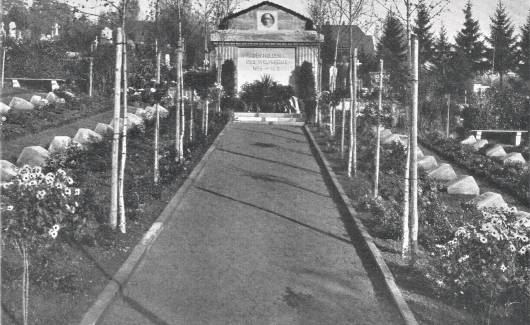


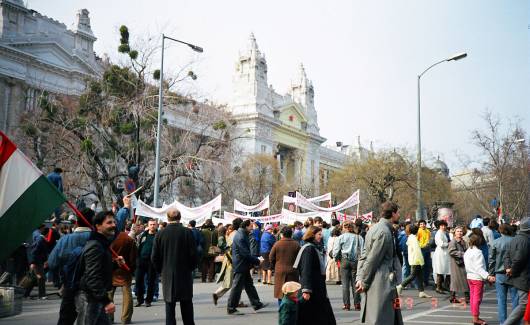
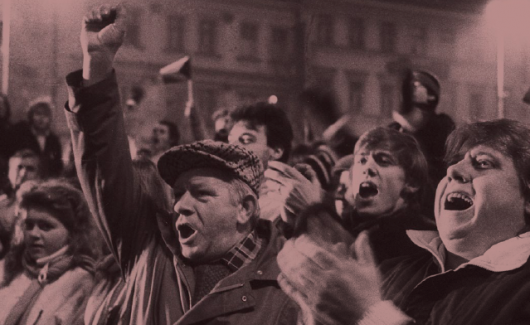
![Photo of the publication The Murder of Armenians – Armenocide – Genocide – Genocide Prevention [...]](https://enrs.eu/media/cache/thumbnail_530_325/uploads/media/5c5af1e6595d0-the-eternal-flame-armenian-genocide-memorial-in-yerevan.jpg)
![Photo of the publication The Military Cemetery as a Form of the Cult of the Fallen Soldier [...]](https://enrs.eu/media/cache/thumbnail_530_325/uploads/media/5c59b0c2f04c0-studies-1.png)
